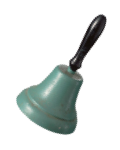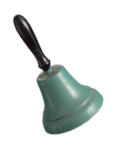Pasir Ris, a coastal town filled with seaside memories, adventures and fun. But what lies beyond the sand and sea? Go on a journey with present day actors as they take you back into the past and discover fascinating untold stories of beaches, coconut plantations, rivers and kampongs through a five-part online mini-series.
The stories and characters portrayed in this production are fictitious.
Episode 1 – Of Pots and Pans
Heng and Freddie are the best of friends. Camping everywhere together, this time around, they have decided on the lovely beaches of Pasir Ris. Even though it will take a long arduous bus ride to get there, the two boys are determined to enjoy themselves. As they wait excitedly at the bus stop, two neighbourhood girls, Mabel and Ling, surprise them with an uncanny determination to also go camping as well! Will the hot sun and long wait put a damper on their scheme of plans?
In the 1950s, Pasir Ris was a place to unwind, relax and enjoy recreational activities such as picnics on the beach, camping under the coconut trees and renting of bungalows. This attracted many families and young people. The only drawback was that getting to Pasir Ris required a tremendous amount of effort! This story is inspired by an actual recount from the 1950s that describes the long bumpy bus ride to Pasir Ris, buses were few and far between, and bus drivers had a tendency of not stopping if they saw you with camping supplies. This story showcases the determination of four young adults and how the beautiful unspoiled beaches of Pasir Ris outweighed the arduous journey to get there.
Episode 2- River Of Life
During the early days of the Orang Laut, the rivers of Pasir Ris, Sungei Tampines and Sungei Api Api, had provided sustenance and nourishment. From the mangroves to the rich abundant wildlife, the people of Pasir Ris have always displayed a deep-rooted respect for nature. For many of the village women, catching udang geragau (small shrimps in English) to make belacan (fermented shrimp paste in English) and selling them at the market was part of their livelihood. Everyday when the tides met, they will be there, breathing the salty air, wading in the cool waters, working hard with their baskets, being one with the river of life.
In the 1940s and 1950s, Sungei Api Api and Sungei Tampines spearheaded the belacan cottage industries of Pasir Ris. Due to the mangrove environment, these rivers provided the villagers with an abundance of wildlife such as crabs, prawns and fish. Every morning, the villagers waded out into the rivers with a basket, net and sticks, faithfully harvesting udang geragau, producing belacan and eventually selling them at the markets. This story is inspired by the belacan cottage industries helmed by families living in the kampongs of Pasir Ris told through a poetic interpretation of three village women and their everyday life at the river.
Episode 3 - House Amongst The Huts
In the 1950s and 1960s, Kampong Loyang was a large bustling village filled with attap huts, farms, plantations and an empty red brick house amongst it all. Who did it belong to? What was it for? Meet Soleha, an ex-resident, as she shares her childhood days of playing catching with her friends, sharing a harvest of mangoes from the trees and how, through the generosity and vision of one woman, the empty red brick house became the focal point that brought the community together.
The rise of the community centre first began in the early 1960s with most neighbourhoods and kampongs around Singapore welcoming one. It was a place to foster community spirit and provide residents with social amenities and activities. In Pasir Ris, Kampong Loyang was one such place. This story is inspired by a charming bungalow, colloquially known as the Pasir Ris Red House, which belonged to philanthropist Lady Yuen Peng McNiece in the 1950s. The house by the sea was donated to the community and not only provided education for the children but was also known as a social place for people to come together. This story is told as a point of view of a woman who lived to experience this lovely bungalow and how it played a central role to the children and the community there.
Episode 4 – The Tree Of A Thousand Uses
A reporter has arrived at the coconut plantations of Pasir Ris with an aim to uncover the secret behind the toddy taverns of Singapore. To her surprise, what begins as an investigative quest turns into a fascinating revelation of the enterprising spirit, resourcefulness and ingenuity of the people who lived amongst the humble coconut tree – Pokok Seribu Guna (the tree of 1000 uses in English).
In the early 1800s, the forests of Pasir Ris were cleared and many plantations such as gambier and pepper grew. Due to the area’s sandy alluvial soil, these crops did not grow very well, forcing estates to turn them into coconut plantations instead. By the early 1900s, Pasir Ris was rich with coconut plantations, filled with tall trees bearing an abundance of fruits. This story is told from a villager’s point of view describing how the humble coconut tree is not only appreciated and treasured by the people of Pasir Ris but how they were resourceful and ingenious in utilising every part of the tree, for cooking to building homes.
Episode 5 – Bathing Pagar
The grand Pasir Ris Hotel, with its bathing pagar (fence in English), soft sand and tranquil waters, has turned into the set of a romantic movie starring big time film star Johnnie Osman and a young unknown actress, Aminah, as his love interest. As soon as the cast and crew arrive, everyone is charmed by its beauty, particularly Aminah who has a sentimental connection to the place. Passionate to share her happiness with her co-star, she is in for a surprise when Johnnie Osman is not too thrilled about the sun, the sand and the sea.
The Pasir Ris Hotel, which was opened in 1952, was a magnificent bungalow that boasted its very own private bathing pagar. An exclusive place, the hotel was where one could imagine living the life of an aristocrat. This story is inspired by a P. Ramlee song “Bila Mama Pakai Celana” (when you wear your pants in English) from Malay comedy movie, Saudagar Minyak Urat (Love Crazy), a Shaw Brothers 1959 production that was filmed on the grounds of the Pasir Ris Hotel. It features a mischievous husband with constant tricks up his sleeves - only to get caught by his tyrannical wife each time!
Check out the Pasir Ris, Rise and Shine playlist below.

About Act 3 International
ACT 3 International, one of Singapore's leading Arts companies, has always been at the cutting edge of making Art to touch the lives of our audience. Producing, creating, executing and educating, our work has transcended the idea of what is theatre into holistic Art making embodying heritage, culture and environment.
Enjoyed this programme? Let us know what you think here and receive a $5 Grab Food voucher*.
*limited to the first 500 complete responses |


